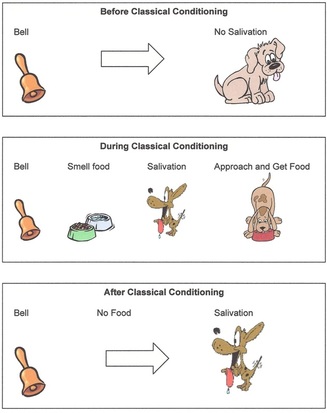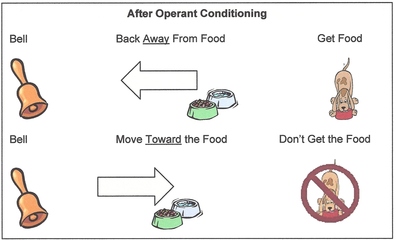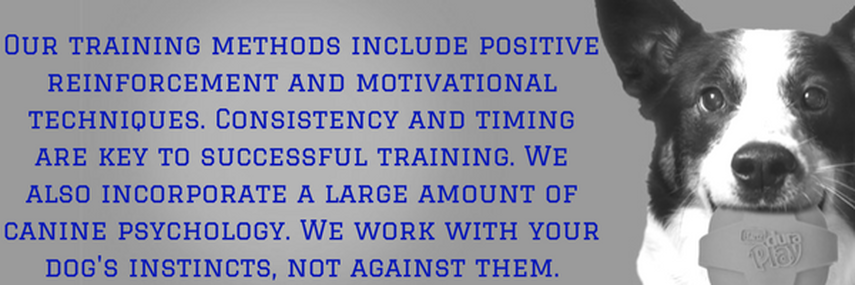Canine Psychology
It all begins with miscommunication, or intention vs. perception. Humans and dogs speak separate languages - people are extremely verbal while dogs are extremely non-verbal. Canine communication consists of eye contact and body language.
Your dog needs to know that you know how to lead him. They need to know that you are confident in your decisions and that you can handle whatever the world throws at you. NCA's definition of dominance is the art of leadership. Three pillars that are fundamental to success:
|
We use two primary behavior-conditioning styles: classical conditioning and operant conditioning. Both are useful in shaping behavior.

Classical Conditioning
Classical conditioning is also called “Pavlovian conditioning.” Classical conditioning is best defined as the dog understanding a simple association, as depicted in the photograph.
The dog never had to learn to salivate when he smelled food. The trainer made a simple association for the dog between bell and food until the dog anticipated food at the sound of the bell.
Classical conditioning is also called “Pavlovian conditioning.” Classical conditioning is best defined as the dog understanding a simple association, as depicted in the photograph.
The dog never had to learn to salivate when he smelled food. The trainer made a simple association for the dog between bell and food until the dog anticipated food at the sound of the bell.

Operant Conditioning
Operant conditioning is best defined as teaching a dog that the particular behavior he chooses to do has a particular consequence. This means that the most significant influence on an animal's behavior is what happens immediately after he makes a particular choice of behavior. A dog makes all of its choices based upon the value of the reward it anticipates as a result of that choice. If the behavior is rewarding, the likelihood of choosing that behavior is increased. If the behavior is "not" rewarding, the likelihood of a dog choosing that behavior is significantly decreased.
Operant conditioning is best defined as teaching a dog that the particular behavior he chooses to do has a particular consequence. This means that the most significant influence on an animal's behavior is what happens immediately after he makes a particular choice of behavior. A dog makes all of its choices based upon the value of the reward it anticipates as a result of that choice. If the behavior is rewarding, the likelihood of choosing that behavior is increased. If the behavior is "not" rewarding, the likelihood of a dog choosing that behavior is significantly decreased.

